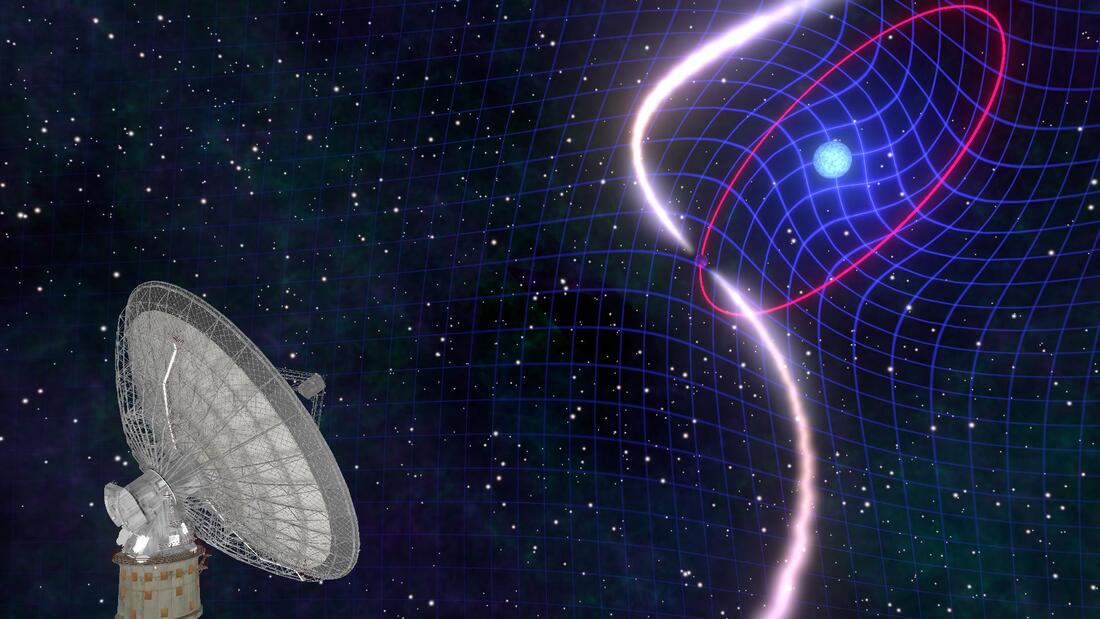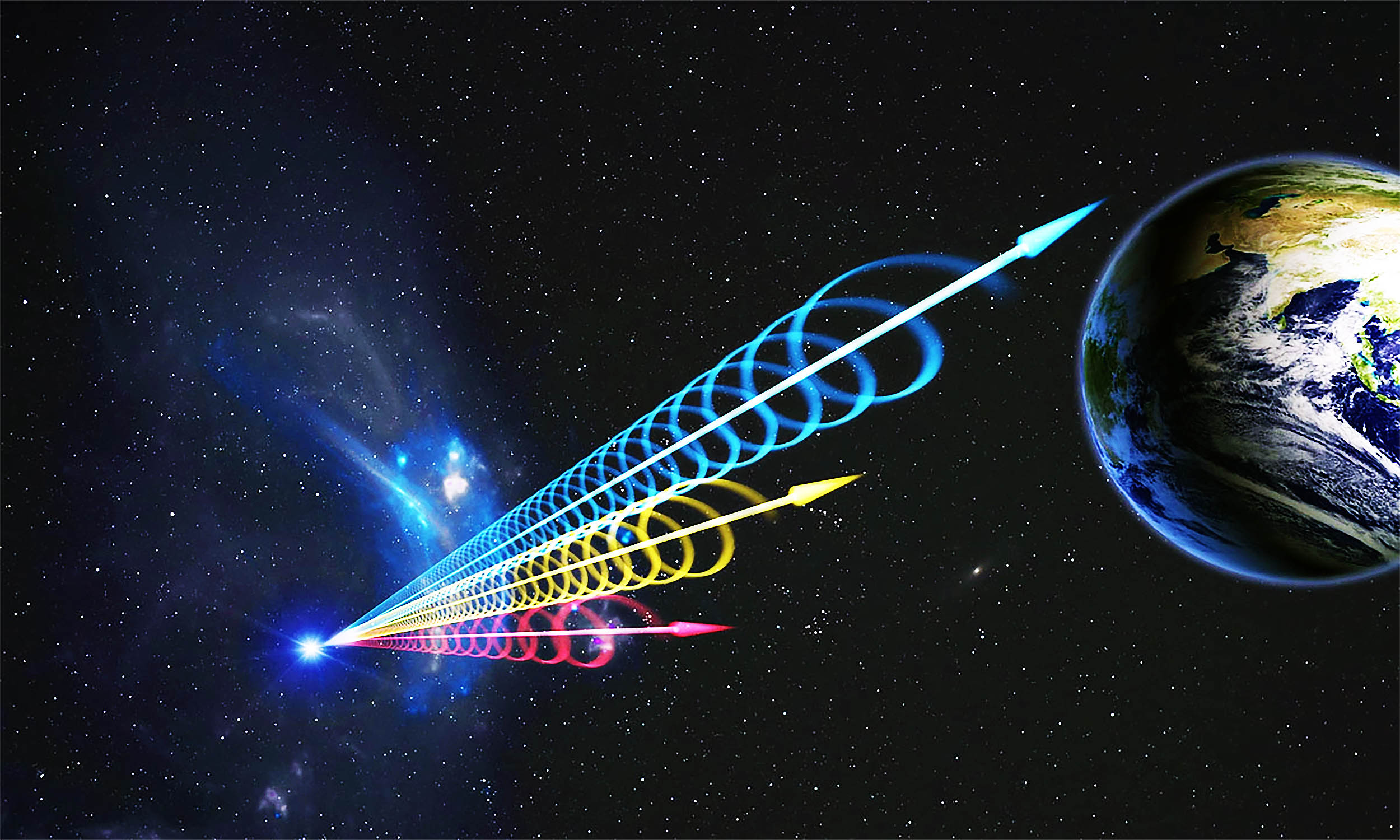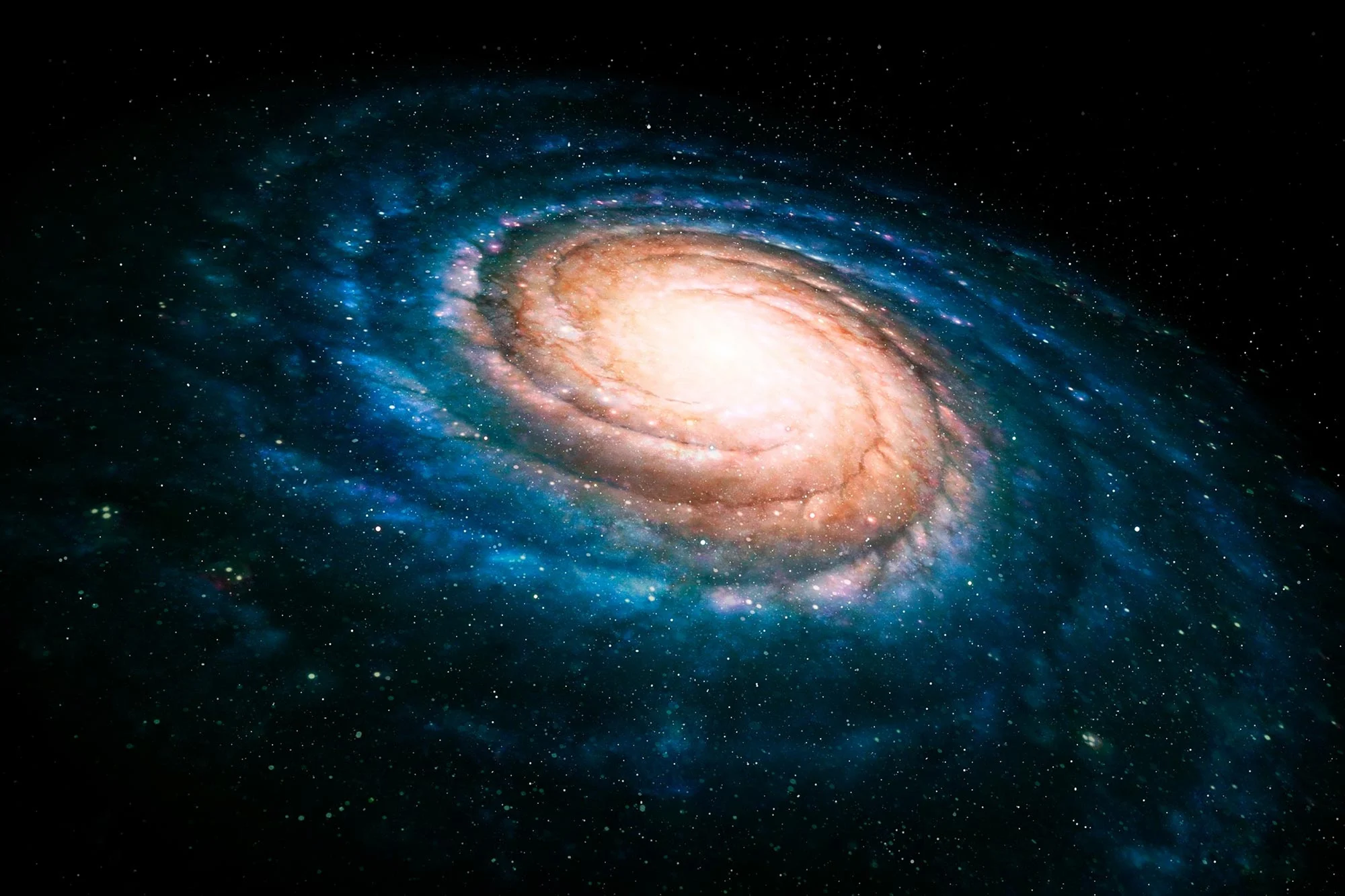A spinning white dwarf drags space-time around it 100 million times more powerfully than Earth

Astronomers have recently provided compelling evidence of a star dragging space-time, showcasing one of Einstein’s lesser-known predictions. This phenomenon, known as “frame-dragging,” describes how a spinning object distorts the very fabric of space-time around it. While this effect is nearly imperceptible in everyday life, even on a planetary scale, certain cosmic conditions make it much more noticeable. A study published in Science details these observations using a radio telescope to study a rare pair of compact stars.
Frame-Dragging and Einstein’s Predictions
Einstein’s theory of general relativity is fundamental to our understanding of gravity. It suggests that massive objects bend space-time, affecting the motion of nearby objects. Additionally, when these massive bodies spin, they twist space-time around them. Detecting frame-dragging on Earth is extremely challenging, requiring highly sensitive instruments like the Gravity Probe B, a satellite that measures minute changes in angular velocity. But in the cosmos, certain celestial objects can serve as natural laboratories to observe this effect with greater clarity.
One such object is a white dwarf—a remnant of a star that has exhausted its nuclear fuel. These remnants, while about the size of Earth, are hundreds of thousands of times more massive. Their rapid rotation can cause a strong dragging effect on the surrounding space-time. In particular, the frame-dragging effect of a white dwarf is around 100 million times stronger than that of Earth.
The Unique System: PSR J1141-6545
The recent study focuses on a unique pair of stars: a white dwarf and a radio pulsar, known collectively as PSR J1141-6545. Discovered two decades ago by the CSIRO’s Parkes radio telescope, this system is a perfect testing ground for studying frame-dragging. The pulsar, a dense neutron star, emits a beam of radio waves that sweeps past Earth 150 times per minute, much like a cosmic lighthouse. By precisely measuring the timing of these radio pulses, scientists can track the pulsar’s path as it orbits the white dwarf.
This precise timing has revealed that the two stars orbit each other in less than five hours, with the pulsar’s orbit slowly tumbling through space. This change in the orbital plane is a direct result of the frame-dragging effect caused by the rapidly spinning white dwarf. The white dwarf’s spin causes space-time to twist around it, dragging the pulsar’s orbital plane along. These observations align perfectly with predictions made by general relativity.
The journey to map this system’s orbit began in 2001, with astronomers visiting the Parkes telescope regularly to study the intricate motions of PSR J1141-6545. Their measurements are incredibly precise, despite the system being several hundred quadrillion kilometers away. They have determined that the pulsar spins at an exact rate of 2.5387230404 rotations per second. This precision has allowed them to detect the slow rotation of the orbit over time, offering a real-world confirmation of frame-dragging.

The formation of this system is a fascinating story in itself. When stars are born in pairs, the more massive one often becomes a white dwarf after it dies. The surviving star can transfer material to the white dwarf, accelerating its spin over thousands of years. In rare instances, this companion star may explode in a supernova, leaving behind a pulsar. The spinning white dwarf then drags space-time around with it, causing the pulsar’s orbit to shift as observed.
Observing the Universe with Older Telescopes
Einstein doubted that many of his theories about space and time would ever be proven directly. Yet recent years have seen breakthroughs like the detection of gravitational waves and the imaging of a black hole’s shadow, largely through billion-dollar observatories. But as this study shows, older and more accessible radio telescopes, such as the one at Parkes, still play a critical role in advancing our understanding of the universe.
The research on PSR J1141-6545 showcases the importance of patience, precision, and the unique conditions provided by the cosmos in testing the boundaries of our knowledge. While advanced facilities grab headlines, discoveries like this remind us that even long-standing instruments, when used creatively, can provide new insights into the workings of the universe.





For someone still don’t get it:
Gravity isn’t a “force” so much as space stretching towards things that are heavy. As the space around and inside of you stretches towards the center of the earth, even though you’re not moving, your body is constantly trying to go along with it.
If you were to step out of a plane, then without any effort or force on your part, your body would happily go right along with the stretching space until it encounters the ground and can’t keep going, at which point you would have a very bad day.
Einstein predicted that heavy objects that spin don’t just stretch space towards them, but actually “swirl” space slightly around them in the direction they’re spinning. But this “swirl” is expected to be so weak compared to the other stretch that it’s hard to measure.
We’ve kinda sort detected a tiny bit of swirl around the earth using satellites in space, but we really need something way, way heavier than earth, but way more compact than the sun to get conclusive proof. Astronomers found one in this distant star system.
There you have a super heavy but tiny spinning object, a neutron star, and a white dwarf orbiting in circles around each other. Conveniently, the neutron star gives off super strong ultra-regular pulses of energy as it spins, that we can measure down to the microsecond even from here.
If space was swirling around these stars the way that Einstein predicted, it should be enough to change the spin of the neutron star and alter the timing of the pulses coming from it it, by an amount we can clearly measure. And it did — exactly as Einstein predicted.
Spinning massive objects create a vortex type of effect on spacetime around them.
For now it’s another confirmation of general relativity.
I think at this point we should just accept anything Einstein said as truth.
it is not “anything”. It is several principles that holds true, Einstein/others just speaking of concequences of that principles, not something completely new
SocialMediaGirls very informative articles or reviews at this time.